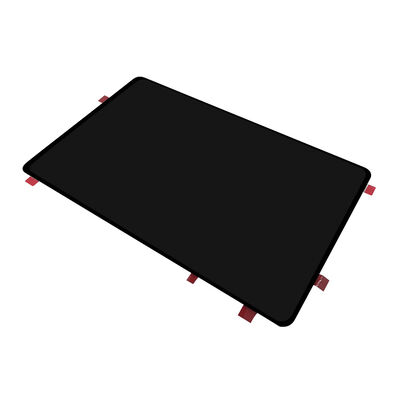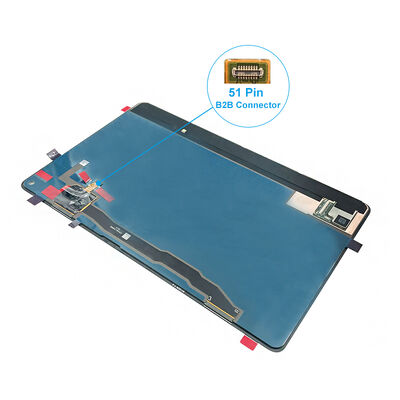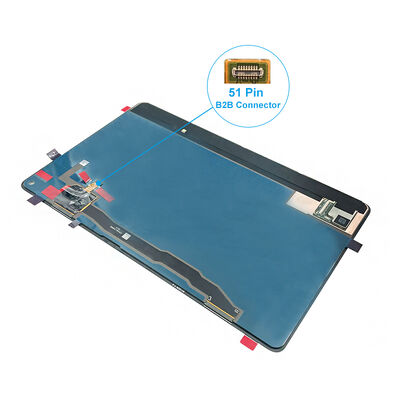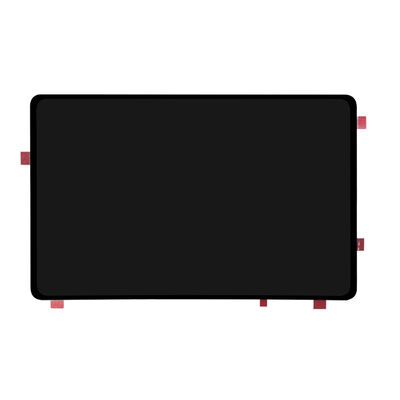Semua produk
-
Layar TFT LCD
-
Layar TFT Layar Sentuh
-
Layar TFT Bulat
-
tampilan warna tft
-
Modul layar AMOLED
-
Layar OLED mikro
-
TFT Tipe Batang
-
Tampilan TFT persegi
-
Layar LCD Kecerahan Tinggi
-
Tampilan LCD COB
-
TFT yang Dapat Dibaca Sinar Matahari
-
Layar TFT UART
-
Modul Layar LCD
-
tampilan PMOLED
-
Tampilan epaper
-
Tampilan Digital LED
-
Panel sentuh kapasitif
11.2 Inch High Resolution AMOLED Display Module with oncell touch, 2560*1536 Dots and 450c/d Brightness
| Tempat asal | Tiongkok |
|---|---|
| Nama merek | HuaXin |
| Sertifikasi | ISO14001/ ISO9001/IATF16949 |
| Nomor model | HX20QBC73.A |
| Dokumen | HX20QBC73.A SPEC.pdf |
| Kuantitas min Order | 180 |
| Harga | $108 |
| Kemasan rincian | Kotak blister+busa+tas gelembung+di dalam karton+karton master |
| Waktu pengiriman | 6 minggu ~ 8 minggu |
| Syarat-syarat pembayaran | T/T |
| Menyediakan kemampuan | 50K per bulan |

Hubungi saya untuk sampel dan kupon gratis.
Ada apa:0086 18588475571
Wechat wechat: 0086 18588475571
Skype: sales10@aixton.com
Jika Anda memiliki kekhawatiran, kami menyediakan bantuan online 24 jam.
xDetail produk
| Teknologi tampilan | Tampilan AMOLED hd | Nama | Layar LCD OLED |
|---|---|---|---|
| Ukuran | 11.2 " | Resolusi | 2560RGB*1536 |
| Kecerahan | 450c/d | Antarmuka | MIPI 2-pelabuhan |
| Mengemudi IC | RM692H0 |
Anda dapat mencentang produk yang Anda butuhkan dan berkomunikasi dengan kami di papan pesan.
Deskripsi Produk
HX20QBC73.A is 11.2 inch amoled display module with oncell touch Display color: 1.07B (RGB x 10 bits) and Display format: 11.2” (2560RGBx1536) and Pixel arrangement: Real RGB
Display Interface: MIPI 2-port D-PHY TP Interface: SPI Driver IC : RM692H0 , Touch screen: On-cell; Touch IC: GT6975P
Product Parameter
| Part No. | HX20QBC73.A |
| Display Size | 11.2 inch AMOLED display |
| Outline Size (mm) | 249.22*154.08 |
| AA Size (mm) | 244.22*146.53 |
| Resolution | 2560RGB*1536 |
| Interface | MIPI 2-port |
| Brightness | 450c/d |
| View Angle | all |
| Driving IC | RM692H0 |
| Touch screen | On-cell |
Product Picture
![]()
![]()
![]()
![]()
Drawing & Pin Definition
OLED Product Knowledge
OLED Advantages:
- Lighter and thinner than LCDs
- High contrast ratio
- High color saturation
- Lower power consumption
OLED Disadvantages:
- AMOLED is more expensive than LCD and TFT
- Lifetime is shorter than LCD and TFT
Company Information
Huaxin Advantage:
- Factory base located at inland city which has cost effective
- Most advanced new equipment which can keep quality stable
- Most processes using fully automatic equipment which has efficiency and stable quality
- Professional engineers and production leaders with 20+ years experience in LCD field
- Self design for customized product
Our Certificates:
- ISO14001
- ISO9001/IATF16949
- SGS of LCD module
Production Capacity
| Annual Production Capacity | 2021 (Current) | 2022 (Goal) | 2023 (Challenge) | 2024 (Challenge) | 2025 (Challenge) | Remark |
|---|---|---|---|---|---|---|
| LCD Production Capacity | 4.5 | 9 | 9 | 9 | 9 | Unit: thousands of logarithms/Day |
| LCM Production Capacity | 70 | 150 | 300 | 450 | 450 | Unit: Thousand piece/Day |
| Backlight Production Capacity | 100 | 200 | 300 | 500 | 500 | Unit: Thousand piece/Day |
| OLED Production Capacity | 10 | 20 | 30 | 40 | 50 | Unit: Thousand piece/Day |
Product Application
- Safety box & instrument
- Lock & smart home
- Transmitter & watch
- Watch & radio
- Collimator & navigator
AMOLED Display Characteristics
- Self-Emissive Pixels
- High Contrast Ratio
- Color Accuracy and Vibrancy
- Wide Viewing Angles
- Power Efficiency
- Thinness and Flexibility
- Fast Response Time
Power Efficiency Comparison
1. Power Consumption:
AMOLED displays consume power on a per-pixel basis, meaning that pixels displaying black or dark content consume very little power, while pixels displaying bright or white content consume more power. LCD and LED displays require a constant backlight that consumes power regardless of the displayed content.
2. Content Dependency:
AMOLED displays are more power-efficient for content with dark or black areas, as individual pixels can be turned off to save power. LCD and LED displays consume a relatively constant amount of power as the backlight remains active.
3. Brightness Control:
AMOLED displays can dynamically adjust pixel brightness for better efficiency in low-brightness scenarios. LCD and LED displays typically have fixed backlight brightness, resulting in higher power consumption.
4. Display Size:
AMOLED displays tend to be more power-efficient for smaller sizes as consumption scales with pixel count. Larger LCD/LED displays may require more power-hungry backlights, reducing efficiency compared to same-size AMOLED displays.
Rekomendasi Produk










